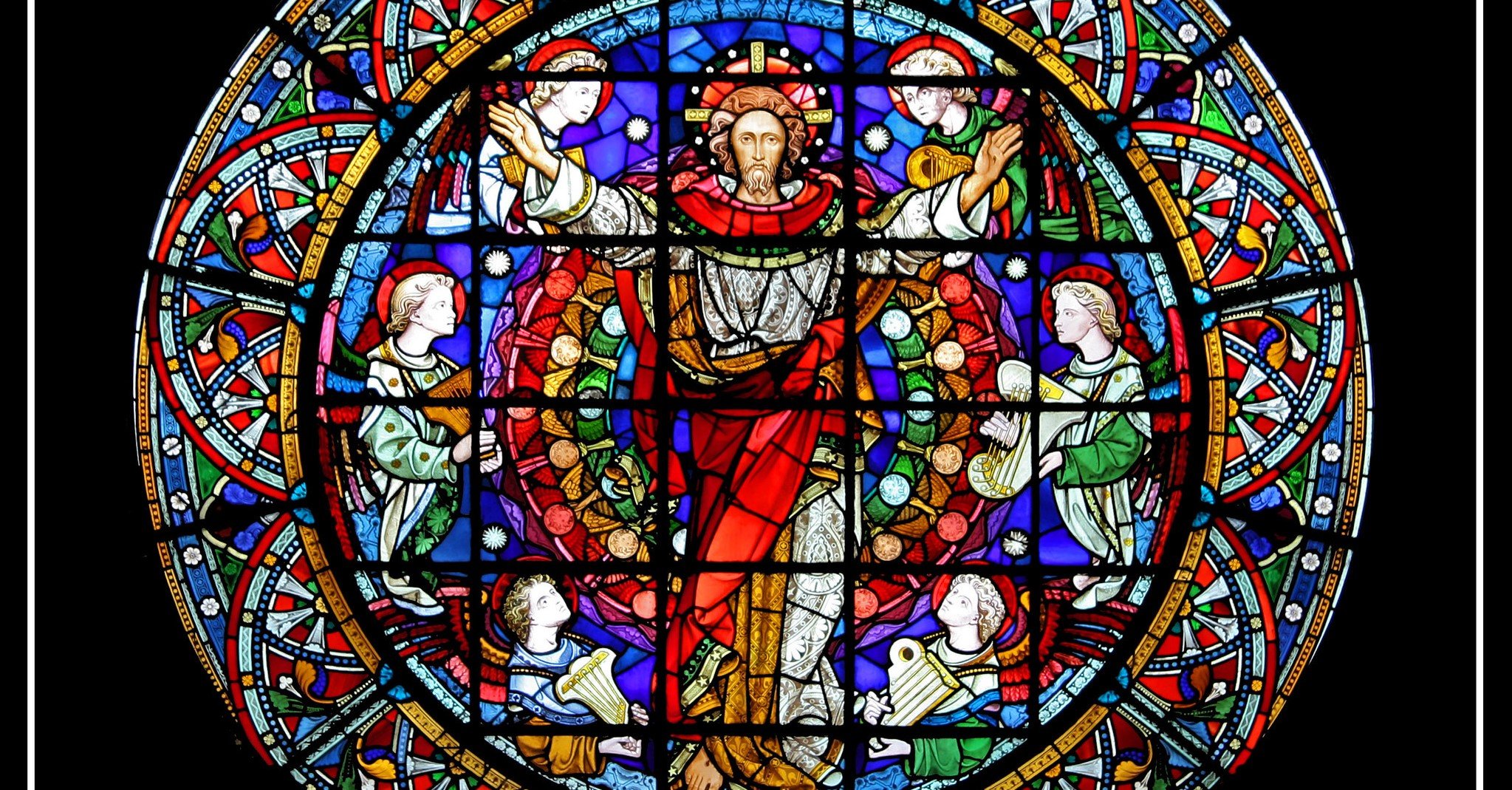
Stephen
Terry, Director


All
Things New
Commentary
for the December 31, 2022, Sabbath School Lesson
 "But in keeping with his promise we are looking forward to a
new heaven and a new earth, where righteousness dwells."
"But in keeping with his promise we are looking forward to a
new heaven and a new earth, where righteousness dwells."
2
Peter 3:13, NIV
In the early 19th
century, Captain William Miller, farmer, and veteran of the War of 1812, began
to seek understanding of his near-death experiences in the war. Seeking those
answers, he ultimately came to two conclusions. He believed that the Parousia
was imminent, and he was preserved to spread that message to prepare people for
Christ's advent. His itinerant preaching built an excited and dedicated
following and those people became known as Millerites, or alternatively, as Adventists.
Their zeal in sharing the warning of Jesus's soon return often caused them to
be disfellowshipped from the established denominations, which only facilitated
their gathering together to create their own fellowships and the movement grew.
But Captain Miller was setting dates for Christ's return, and therein was the
demise of his involvement with the movement. The first date he set, passed without
event. While this was discouraging, he offered up that his calculations were
wrong and based on revised calculations, he stated that a new date in October
of 1844 was when Jesus would return for his flock.
This date, too, would pass with
no Parousia. Miller's followers were devastated. Many had sold what they owned
to prepare to leave this earth with Jesus. Farmers had left their crops in the
fields unharvested. How were they to move on from here? On top of that, those
who had not been taken in by Miller's date setting laughed the distraught
Millerites to scorn for their foolishness. Into this despair walked Hiram
Edson, a lay preacher who offered up yet another explanation for why there was
no Parousia. He declared that instead of cleansing the earth, Jesus had entered
the Holy of Holies in the heavenly sanctuary to cleanse it in a process that came
to be known as the Investigative Judgment. A small band of Millerites coalesced
around this new idea and eventually incorporated as Seventh-day Adventists in
1863, picking up Sabbatarianism along the way.
Initially, the doctrines of the denomination
were simple and focused on those two beliefs. Jesus is coming again soon and
keeping the seventh-day sabbath is a blessing to those who observe it. But over
time the dogma of the denomination became much more complex and rigid. When I
became a Seventh-day Adventist approximately a century after its incorporation,
the denomination was still in the later stages of becoming. They had developed
a global educational system of parochial schools and universities. They
promoted an emphasis on health, training tens of thousands for health care careers
and promoting public health by opposing the use of tobacco, alcohol, and recreational
drugs, as well as other health destroying habits. They also promoted various types
of vegetarianism as more healthy alternatives to eating. Taught as well was
proper exercise and rest, the weekly sabbath rest reminding us of the
importance of the concept of rest from the very first weeks of Creation.
Eventually, much of this gelled
into what is now known as the "28 Fundamental Beliefs."[i] Whether
this is a good development is the subject of much debate. Some feel we have
nailed down what is understood too firmly while others feel that there are still
too many loose ends flapping in the disputational breezes. Nonetheless, this is
where we are as voted by General Conference Sessions representing the global
denomination. In a sense, before fully implemented as a full list of 28 items,
the denomination announced this rigid solidifying of our doctrines at Glacier
View Ranch in 1980 where a credentialed Seventh-day Adventist minister and
educator was defrocked for challenging the boundaries of our faith concerning belief
number 24 regarding the Investigative Judgment. This was a challenge that
stretched all the way back to Hiram Edson's claims regarding the significance
of the 1844 disappointment. Since this was the single rationalization that
allowed the Adventists to persist past 1844, it was seen as vital to the denominations
continued existence. This may be an over reaction since there is much in the remainder
of our beliefs that are strong, commendable, and efficacious for continued
denominational growth and advancement of the gospel around the globe. What seemed
vital at the time of disappointment and public scorn does not seem so vital in
retrospect, especially in the light of our maturing theology that had its beginning
in the 1888 Message of Jones and Waggoner, pioneers of righteousness by faith within the Seventh-day Adventist church. Deeply profound then, it was in
some respects a rediscovery of Martin Luther's declaration of the grace that
makes salvation by faith possible.
The denomination defrocked Desmond
Ford for questioning Hiram Edson's conclusions. Like Caiaphas who proclaimed Jesus must die
for the sake of the nation,[ii]
they agreed that Ford must be disposed of for the sake of the denomination.
This was an astonishing step to take since the denomination had weathered
challenges on doctrines in many areas, including this one, without such a
drastic response. The turmoil surrounding the publication of the book "Questions
and Answers on Doctrine," being one of several examples. In the end, they did
not silence Desmond Ford. He continued to publish and speak until his death in
2019. Instead, it revealed how fragile is the denomination's position regarding
the almost two-hundred-year-old record of the statements of Hiram Edson. Unlike Ellen White or several other founders, Edson,
except for this one singular incident in 1844, was not a
great guiding founder of Seventh-day Adventism. His claim was picked up and
trumpeted by more gifted individuals who saw in it the opportunity to refute
the claims of the naysayers who laughed at their disappointment. As time has
gone on, there has been less and less need for that defense. Most Christian
denominations now recognize that the Parousia is a biblical promise yet to be
fulfilled, possibly imminent, impossible for us to precisely predict but
nonetheless declared in Christ's words, "I will come again!"[iii]
This alone is enough to justify the existence of any Adventist and provide a
message to proclaim.
It is the essence of the gospel,
and it should be the essence of our preaching and our being as well. It still
carries the idea of urgency even after the passing of two centuries, for if it
seemed urgent then, how much more so two hundred years on. This return is the
blessed hope so often spoken of. It should be our hope, and it does not depend
on buying into esoteric dogmatic trivia for realization. I surmise there may be
plenty of people who welcome Jesus with open arms who never even heard of the
Investigative Judgment doctrine, along with those Seventh-day Adventists who
could not even explain its intricacies yet are still taken into the arms of
Jesus at his coming. Jesus said we must become as children to be saved.[iv] Children
are not known for creating complex theological structures to define their faith.
Their faith is simple, based on love and trust in Jesus.
While the pall of Glacier View
has hung heavy over this quarter's lesson study. There remains a direct
conflict with some of modern Christianity that has been highlighted and has
little to do with that peculiar Adventist belief. The conflict I am referring
to is the belief by many that at death they pass immediately to heaven. (I say
heaven because I have never heard anyone preached into hell at a funeral. It is
always heaven.) Some believe we become angels. Some may believe we become demigods
in our own right. But the problem is if we go immediately to heaven, what point
is there in Jesus returning for us later? It is possible that some may be
confused about what is to take place. They may not have read Paul's letter to
the Christians in Corinth about what will happen when Jesus returns.[v] He
states that those who have died in Christ are sleeping in their graves,
awaiting his return. They are sleeping in the blessed hope of the resurrection
to come, but that does not agree with what many preachers are teaching their
flocks. Pop theology has gotten so far astray that some are even preaching pets
into heaven across the "rainbow bridge" when they die. It is a view popularized
in the animated movie, "All Dogs Go to Heaven." There is nothing in Judeo-Christian
scriptures to support that idea.
It is nice that when we think of
heaven, we tend to equate it with nice things we have known here - our favorite
pets, beautiful gardens, and wonderful people we have known. But the beauty of
heaven is not in perpetuating the shadows of beauty we have seen here. C.S. Lewis
felt that were we to experience heaven now, its intensity would be more painful
than beautiful to our senses. Perhaps that is why Paul said we would need a corporeal
change to harmonize with heaven in that letter he wrote to Corinth.
I see our biggest challenge as a
denomination is to prepare a people for the hope of heaven. It is not to haggle
over esoteric points inessential to our salvation for our entire lives and then
to be preached into heaven at our funerals. While Adventists agree with Paul
and do not preach people immediately into heaven at death, we don't do much
better when we preach that the person is certainly resting in their grave with
the hope of a similar result at the Parousia. Instead of preaching the dead
into heaven, we would do far better to preach them there while they are living,
and it can do some good. This does NOT mean picking at what we feel are their
flaws to purify them for heaven. There is entirely too much of that already.
Too many self-styled prophets think they are the special ones God has given spiritual
discernment to. They are all too eager to usurp the Holy Spirit's work on our
behalf and point out our many sins. The greatest message we can share to
prepare others for heaven is how to be more loving, for love is the image of
God,[vi]
the image we were created to bear,[vii]
the image we will display in heaven.[viii]